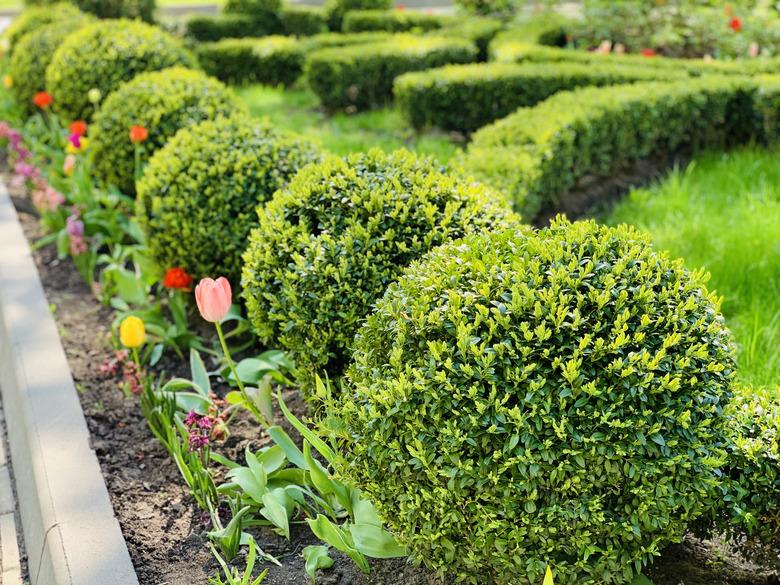How Much Space Between Boxwoods When Planting?
We may receive a commission on purchases made from links.
It's impossible to generalize about spacing boxwood (Buxus spp.) in any way that is useful. That's because there isn't one boxwood but many boxwood species and cultivars that vary in size, growth habit, and width. Your planting design will depend on which one you plant in your landscape.
Meet the Boxwood
Meet the Boxwood
Don't think of boxwood as the new kid on the block. Gardeners have counted on boxwoods for some 6,000 years, and the common name comes from the practice of the ancient Greeks and Romans of making boxes from its heavy, fine-grained wood. It was first used in a garden hedge in about 4,000 B.C. by the Egyptians.
Today, there are many species and even more cultivars of this short evergreen. American boxwood (Buxus sempervirens) is among the more common, and without trimming, the species plant grows slowly to 20 feet tall. Its cultivars range in dimension from Buxus sempervirens 'Vardar Valley,' at 2 to 3 feet tall and 3 to 6 feet wide, to Buxus sempervirens 'Angustifolia,' which looks like a tree.
The other very common species is termed littleleaf or Japanese boxwood (Buxus microphylla), which is much more of a shrub than a tree. The species plant grows to a height and spread of 4 feet. It also has many cultivars that vary in spread as well as in size from small to tall.
Plant Boxwood Plants
Plant Boxwood Plants
Boxwood plants are traditionally sheared and are used as columns or hedging or are trimmed into shapes in formal gardens. Homeowners also use boxwood to create informal hedging. These versatile evergreens are flexible in their needs. They can grow in full sun if planted in good, moist soil, but they can also thrive in heavy shade. All require well-drained soil.
Boxwoods in general have shallow roots. This means that they should not be planted too deep since it can damage and even kill them. A good rule of thumb is to allow the top 1/8 of the root ball to peek out above the existing soil level. Once established, they are low-maintenance plants that tolerate pruning and/or shearing and ask only for occasional watering during dry spells.
Place and Space Boxwood
Place and Space Boxwood
Given the broad range in mature height and width of boxwood species and cultivars, no general rules about spacing the plants are useful. Spacing also clearly depends on whether you are planting a hedge or a cluster of boxwoods. You'll need to have a clear idea of the mature dimensions of your boxwoods at the time you are creating the landscape design.
If you are planting boxwoods as individual ornamental bushes, space them some 5 feet apart. For hedging, take the size of the cultivar into account. Dwarf cultivars should be placed 36 inches apart, shorter cultivars for low hedging should be placed 18 inches apart, and tall hedging plants should be 24 inches apart.
